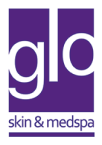1. Onset Time
If you’re looking for fast results, Dysport may have a slight edge. Many clients notice visible softening of wrinkles within 2 to 3 days after treatment.
Botox, on the other hand, tends to take 3 to 5 days to start working, with full effects appearing around 10 to 14 days. This difference may matter if you're preparing for a special event on a short timeline.
2. Spread and Diffusion
Dysport’s formula has a smaller protein size, allowing it to spread more easily. This can be beneficial when treating larger areas like the forehead or when a softer, blended effect is desired.
Botox is more precise and localized, making it ideal for targeted areas like crow’s feet or vertical frown lines (the “11s”). This precision can be especially helpful for clients who want to maintain more control over movement in certain facial zones.
3. Dosage and Units
Dysport and Botox are measured differently. It generally takes about 2.5 to 3 units of Dysport to equal the effect of 1 unit of Botox. This doesn’t make Dysport weaker—it’s just a different formulation.
At Glo Skin & Medspa, our providers understand how to convert dosing accurately so that you get balanced, effective results regardless of which product is used.
4. Longevity and Maintenance
In most cases, both products last around 3 to 4 months, depending on your metabolism, muscle activity, and the treatment area. Some clients report slightly longer results with one brand over the other, but this tends to be individualized.
Consistent treatments over time can help train muscles and potentially extend results, regardless of the product used.
5. Cost Considerations
Dysport is often priced lower per unit than Botox. However, because more units are needed to match Botox’s effect, the total price often ends up comparable.
Rather than choosing based on cost alone, it’s more effective to let your injector recommend the product based on your goals and the best clinical fit.



